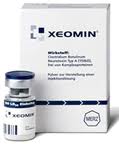The battle of the facial wrinkle reducers continues to become more competitive. Botox has always been the gold standard because it was first and largely established the market as it exists today. Several years ago Dysport entered the scene which initially caused a bit of buzz. But to date it has not eroded dramatically Botox’ dominance in the aesthetic facial market. This is mainly because Dysport does not offer any significant differences in its effects to either the doctor or the patient. With a minimal price difference, it is perhaps no surprise that Dysport has not offered up a real challenge to Botox as of yet.

While it is a competitive analogue, what makes Xeomin different if anything from Botox and Dysport? The most obvious difference is that it does not need to be refrigerated. This may seem like a trivial difference that only matters to the doctor, but it has great relevance to the patient as well. If Botox or Dysport is mixed and accidentally not refrigerated, it becomes ineffective quite quickly. If someone has ever had a facial injection and it did not work, it may have been caused by a ‘bad’ drug mixture that was allowed to get warm or had been forgotten to be refrigerated overnite. This is also a benefit in the way the drug is distributed and shipped from the manufacturer. The other minor difference is that Xeomin is manufactured without additives. This may lessen the potential for any drug reaction problems.

Where will Xeomin fit into the injectable facial wrinkle market? Without a substantial performance difference or cost benefit, it will likely end up similar to the fate of Dysport so far. Occupying a small percent of the market and, like Dysport, being the Pepsi compared to Coke.
Dr. Barry Eppley
Indianapolis, Indiana


